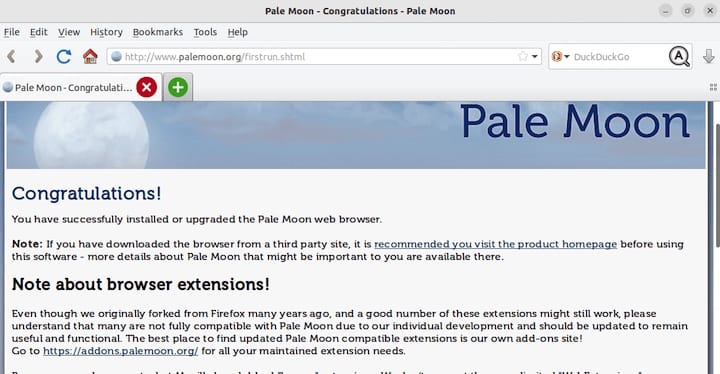How To Install Pale Moon Browser on Fedora 39

In this tutorial, we will show you how to install Pale Moon Browser on Fedora 39. In the dynamic world of web browsing, users seek speed, security, and customization. Pale Moon Browser emerges as a distinguished choice for those who value these attributes. Originating from Mozilla’s Firefox, Pale Moon offers a familiar yet distinct experience, optimized for modern systems.
This article assumes you have at least basic knowledge of Linux, know how to use the shell, and most importantly, you host your site on your own VPS. The installation is quite simple and assumes you are running in the root account, if not you may need to add ‘sudo‘ to the commands to get root privileges. I will show you the step-by-step installation of the Pale Moon Browser on a Fedora 39.
Prerequisites
Before diving into the installation process, let’s ensure that you have everything you need:
- A server running one of the following operating systems: Fedora 39.
- It’s recommended that you use a fresh OS install to prevent any potential issues.
- You will need access to the terminal to execute commands. Fedora 39 provides the Terminal application for this purpose. It can be found in your Applications menu.
- You’ll need an active internet connection to download Pale Moon Browser and its dependencies.
- A
non-root sudo useror access to theroot user. We recommend acting as anon-root sudo user, however, as you can harm your system if you’re not careful when acting as the root.
Install Pale Moon Browser on Fedora 39
Step 1. Keeping your system packages up-to-date is a fundamental step before installing any new software. This ensures that your system is secure and running smoothly. To update your system packages in Fedora, open the terminal and run the following command:
sudo dnf clean all sudo dnf update
Step 2. Installing Pale Moon Browser on Fedora 39.
Start by navigating to the official Pale Moon download page. Use the wget command to download the tarball directly from the terminal:

wget https://rm-us.palemoon.org/release/palemoon-32.5.2.linux-x86_64-gtk3.tar.xz
Once the download is complete, you need to extract the file. The Pale Moon Browser is typically downloaded as a tar.xz file, which is a type of compressed file. To extract it, use the tar command followed by the name of the downloaded file:
tar -xvf palemoon-32.5.2.linux-x86_64-gtk3.tar.xz
Next, move the extracted files to the /opt directory, which is typically used for additional software installations:
sudo mv [extracted folder name] /opt/palemoon
Step 3. Creating a Desktop Shortcut.
To create a desktop shortcut, we’ll create a .desktop file in the /usr/share/applications directory:
sudo nano /usr/share/applications/palemoon.desktop
In the opened file, add the following content:
[Desktop Entry] Name=Pale Moon Browser GenericName=Web Browser Comment=Browse the World Wide Web Exec=/opt/palemoon/palemoon Terminal=false Type=Application Icon=/opt/palemoon/browser/chrome/icons/default/default128.png Categories=Network;WebBrowser;
Save and close the file.
Step 4. Launching the Pale Moon Browser on Fedora.
You can now launch Pale Moon from the terminal by typing /opt/palemoon/palemoon or by clicking the desktop shortcut.

Congratulations! You have successfully installed Pale Moon. Thanks for using this tutorial for installing the Pale Moon Browser on your Fedora 39 system. For additional or useful information, we recommend you check the official Pale Moon website.